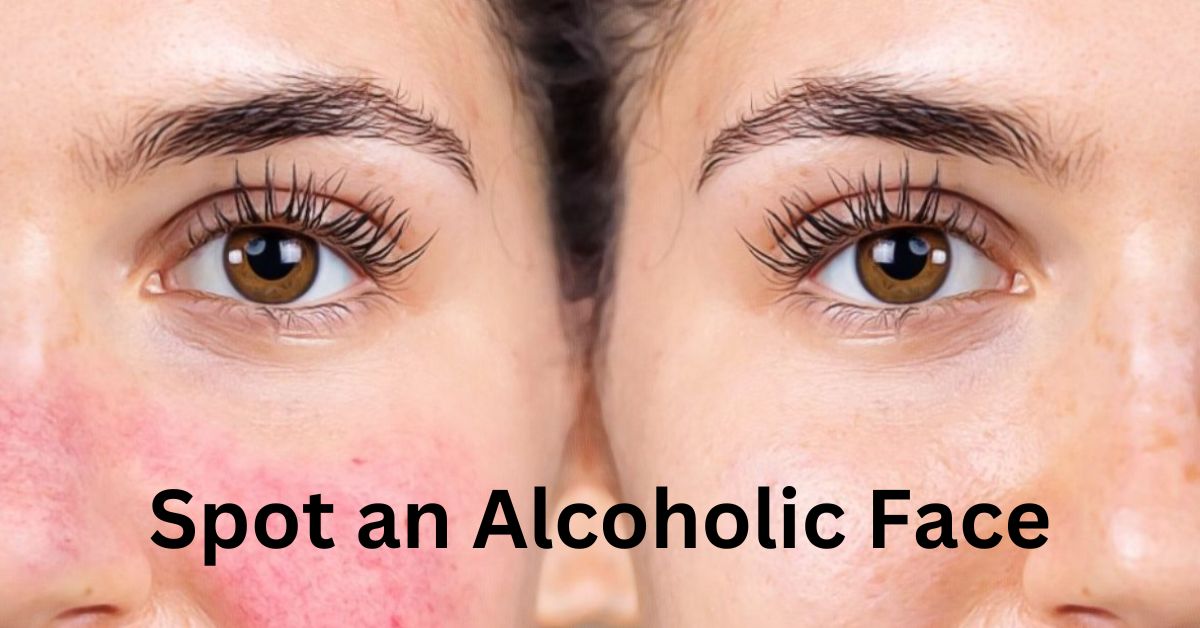Introduction: How to spot an alcoholic face is a serious condition that affects individuals physically, mentally, and emotionally. Identifying the physical signs of alcoholism, including changes in the face, can help in recognizing the problem early on. This article will highlight the visible effects that excessive alcohol consumption can have on the face, enabling you to spot potential signs of alcoholism.
- Facial Redness: One of the most common signs of excessive alcohol consumption is facial redness. Alcohol dilates blood vessels, leading to increased blood flow to the skin. This can result in a flushed appearance, particularly in the cheeks and nose. Persistent facial redness, even when not consuming alcohol, may indicate a chronic alcohol use disorder.
- Broken Capillaries: Alcohol abuse can cause the tiny blood vessels near the skin’s surface, known as capillaries, to burst. This condition, called telangiectasia, often manifests as small, red, or purple spider-like veins on the face, especially around the nose and cheeks. The presence of broken capillaries is a potential sign of long-term alcohol abuse.
- Puffy or Swollen Face: Alcohol is a diuretic that dehydrates the body. Chronic alcohol use can lead to water retention and facial swelling, commonly referred to as a “puffy” face. The swelling is more noticeable in the morning and can make the face appear bloated or swollen.
- Skin Texture Changes: Excessive alcohol consumption can adversely affect the texture and quality of the skin. Alcohol dehydrates the body, leading to dry and flaky skin. In addition, alcohol can decrease collagen production, making the skin lose its elasticity and appear aged. A person struggling with alcoholism may have prematurely aged skin, with wrinkles, fine lines, and an overall dull complexion.
- Jaundice: Severe alcoholism can cause liver damage, leading to a condition called jaundice. Jaundice causes the skin and whites of the eyes to turn yellow due to the accumulation of bilirubin, a yellow pigment produced by the liver. While jaundice is not exclusive to alcoholism, it can be an alarming sign of liver dysfunction caused by excessive alcohol consumption.
Conclusion: Recognizing the physical signs of alcoholism is crucial for early intervention and providing support to those in need. While these facial changes may indicate a possible alcohol use disorder, it is important to remember that each person’s experience is unique, and additional signs and symptoms should also be considered. If you suspect that someone may be struggling with alcoholism, it is essential to approach the situation with empathy and encourage them to seek professional help.
FAQs
Q: Can facial redness alone be a definite sign of alcoholism?
A: Facial redness can be a common sign of alcoholism, but it is not a definitive indicator on its own. Other factors, such as the individual’s overall drinking patterns and additional physical symptoms, should be considered for a more accurate assessment.
Q: Are broken capillaries exclusive to alcoholism?
A: Broken capillaries can occur due to various factors, including alcohol abuse, but they are not exclusive to alcoholism. Other conditions like sun exposure, rosacea, and genetics can also contribute to the development of broken capillaries on the face.
Q: Can a puffy face always be attributed to alcoholism?
A: While a puffy face can be a sign of alcoholism due to alcohol-induced dehydration and water retention, it is not solely indicative of alcohol abuse. Other factors such as allergies, dietary choices, or certain medical conditions can also cause facial swelling.
Q: Do all heavy drinkers develop prematurely aged skin?
A: Not all heavy drinkers will develop prematurely aged skin, but excessive alcohol consumption can contribute to skin aging. Factors like genetics, overall health, lifestyle choices, and sun exposure can also influence the appearance and aging of the skin.
Q: Is jaundice always a result of alcoholism?
A: Jaundice can be caused by various factors, including alcohol-related liver damage. However, it is important to note that jaundice can also be a symptom of other liver diseases, viral hepatitis, or certain medical conditions, so it is not exclusive to alcoholism.
Q: Can these facial signs be reversed with alcohol cessation?
A: With alcohol cessation and appropriate medical care, some of the facial signs associated with alcoholism, such as facial redness and puffiness, can improve. However, certain irreversible changes, like broken capillaries and skin texture changes, may require additional treatments or interventions for noticeable improvement.
Note: It is essential to consult with healthcare professionals or addiction specialists for a proper diagnosis and to discuss any concerns related to alcoholism or its potential effects on the face and overall health.
Read This: How to Send Postcards to Scarlet and Violet
